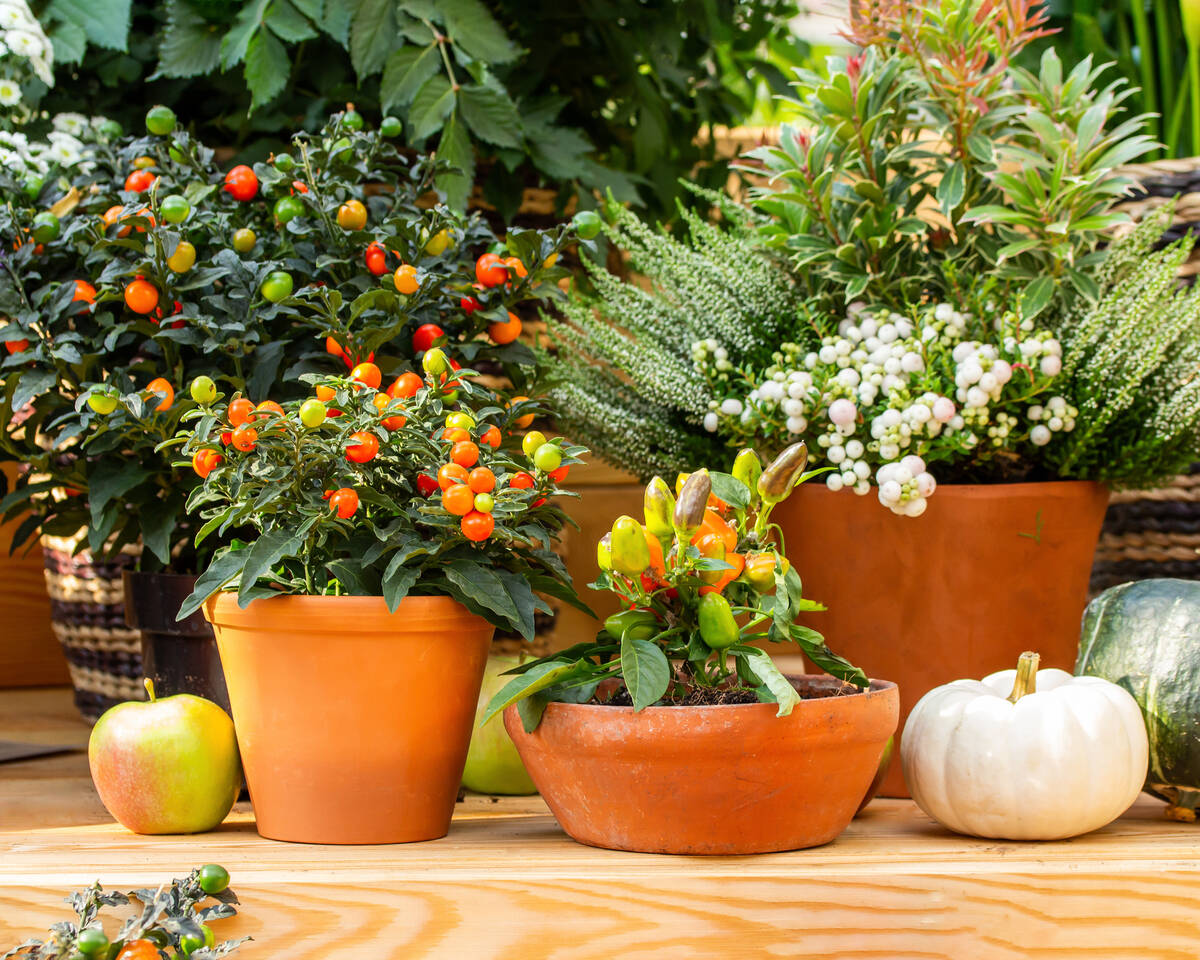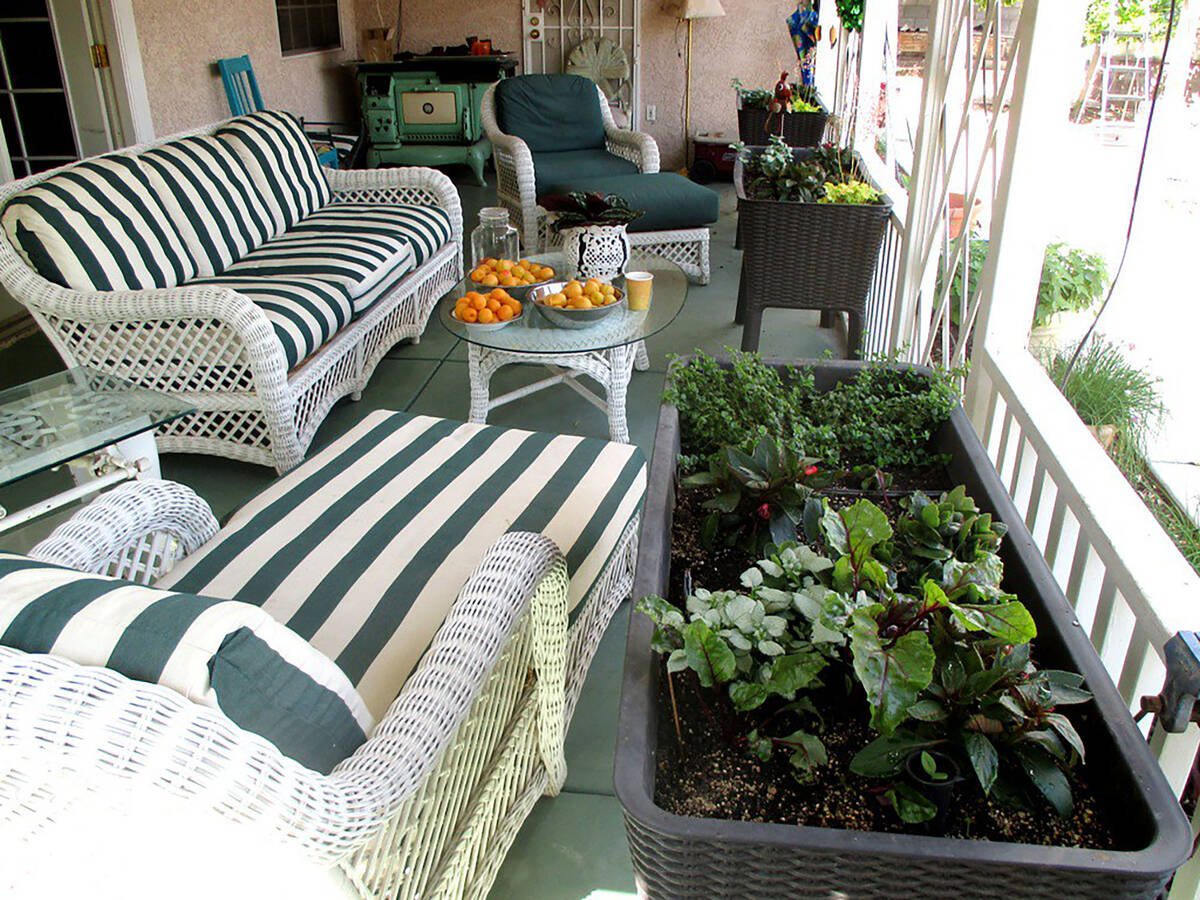Tips for small-space gardening
The backyard garden isn’t exactly a mainstay in Las Vegas, but the growth of gardening’s popularity around the country has certainly found its way to the valley.
Many homeowners now experiment with gardens in small (sometimes less than ideal) backyard spaces or at community gardens; apartment residents have even gotten in on the action, too. In fact, Apartment Guide recently listed Las Vegas as one of the best cities for gardening.
That said, it’s still important to remember that all gardening requires consistent attention, patience and plenty of trial and error. Here are some tips to keep in mind for a garden in a small backyard space or apartment.
Let sunlight guide plant position
Plants need bees, sun and water, and the first two are hard to find indoors, explains Leslie Doyle, head of the Desert Gardening School at The Sweet Tomato Test Garden in Las Vegas. So, whether you have a backyard, balcony or indoor space, you first will want to find places that get maximum sun throughout the day.
Many experts say fruits and vegetables need about six to eight hours of sunlight a day. That’s a baseline for survival, Doyle adds; a thriving plant needs a lot more sun. That doesn’t mean you can’t grow a fruit or vegetable in a small space or apartment, but you will just need to adjust expectations about how well it will grow.
“Yes, you can grow it (with six or eight hours of sunlight), but the plant’s not going to be all it can be,” Doyle said. “If you’re growing a 10-ounce tomato, you may be lucky to get a 3-ounce tomato.”
Water plants to cool them
When you give plants as much sun as possible, you need to keep the plants cool with adequate water. The desert actually provides some assistance on this front. The natural groundwater temperatures in the valley range between 50 degrees in the winter and 75 degrees in the summer, Doyle has found. Use this knowledge to your advantage.
Doyle’s 10-foot-by-14-foot garden bed produces hundreds of tomatoes each year. She uses a drip system to water for approximately four to six minutes about nine times a day. This helps to keep the plants from burning up. Doyle also emphasizes the importance of reading the directions for each plant before planting to understand how much water it needs.
“Everybody thinks they need to create shade for their plants, and that’s absolutely the wrong thing to do,” Doyle said. “People think they’re too hot … but the burning up is caused by the fact that you’re probably watering irregularly.”
Start with quality soil and set a nutrition schedule
Doyle also foliar feeds three times a year by applying a liquid kelp fertilizer to plant leaves and adds soil fertilizer every 30 days. She says a quality soil for your base is important and has found success with Dr. Earth and Arizona’s Best brands.
“I have heard the adage ‘If you have a dollar, use 90 cents for the soil.’ Very true. ViraGrow has a couple wonderful organic, bio-solid free choices that I prefer,” added Jonathan Spears, owner of Sage Design Studios, a landscape architecture studio in Las Vegas.
Doyle is not too particular about which soil she picks. She says there are many high-quality ones out there. But she cautions against using Miracle Grow because it is engineered for plants, not fruits and vegetables.
“The nitrogen content is too high. You will get beautiful plants, but not beautiful tomatoes,” she added.
Use a raised bed if you can
If you are working with a backyard space, you will want to avoid planting directly in the ground. Doyle says cinder blocks are good for creating borders in a small backyard space, and you only need about 8 inches of soil above ground for planting.
Sarah Jameson, a spokesperson for the website Green Building Elements, suggests the “square-foot gardening approach,” which is a raised-box garden divided into 1-foot squares. “
If you’re not sure where to start planning for your garden, you can use this as a guide to know how many plants can fit in a 2-by-4-foot space,” she said.
Jameson also suggests grouping plants together that have the same sunlight and watering needs.
“This makes it easier for you to monitor their progress and prevents you from making mistakes of overwatering or overexposing them,” she added.
Pick what grows best in the desert
Tomatoes, peppers, eggplants, corn, melons and lettuce varieties like kale can all grow well in the desert with the right amount of sun and water. The larger fruits and vegetables will need a small backyard space.
“I have had good luck with serrano peppers on the side of my previous home sandwiched in between two two-story homes with only 5 feet of yard on each side of the wall,” Spears added.
Herbs require less light and may be a good option for apartment windowsills and situations with less light available. Parsley, chives, lavender, thyme and rosemary are herbs that can work well in small gardens or in containers, says Brody Hall, a horticulturist with The Indoor Nursery, a website that covers indoor gardening.
“They are drought-tolerant and add great flavor to home-cooked meals. Root vegetables like carrots and radishes will grow nicely in a sunny spot with some good soil, too,” he added.
Don’t forget to get permission, and keep learning from others
Stuart Mackenzie, a horticulturist with Trees.com also offers a common-sense tip for apartment residents or even home renters before they start.
“It’s really important to talk with your landlord, property manager or community coordinator. No matter the size of the community, the property owner has the right to know what your plan is,” he said. “Property is an asset, so digging up areas for a garden is not a smart thing to do without permission. Get permission first.”
Doyle also says there are educational opportunities throughout the valley, and it’s a good idea to stay in touch with others in the local gardening community so you can learn from their experiences and get some of your questions answered.
You can learn about Doyle’s Las Vegas Gardening Club Facebook page. She suggests tapping community gardens like San Miguel Community Garden for workshops and education. The University of Nevada’s Cooperative Extension and Springs Preserve are other gardening and educational resources.



















